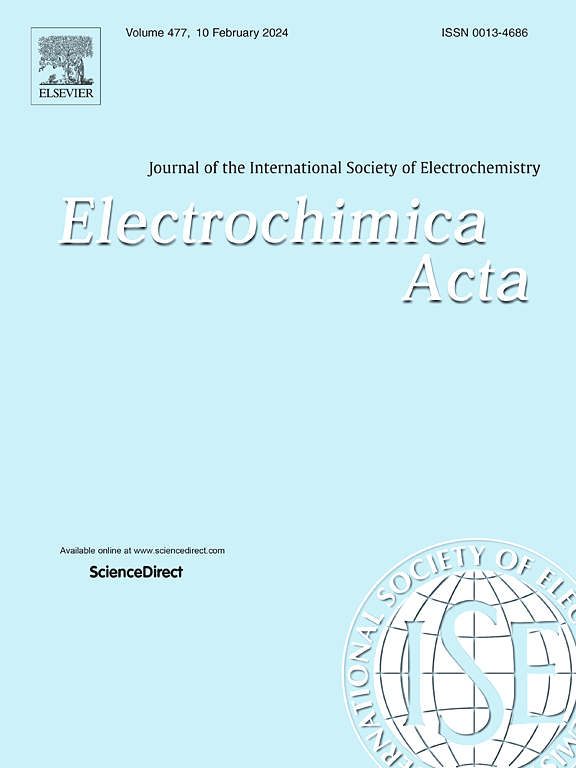Lithophilic SnO2-reinforced carbon fiber-based composite anode for high-performance lithium metal batteries
IF 5.5
3区 材料科学
Q1 ELECTROCHEMISTRY
引用次数: 0
Abstract
Lithium metal batteries are among the most promising energy storage systems due to the high energy density. However, its practical application is hindered by growing lithium dendrite and unstable solid electrolyte interphase. Three-dimensional conductive collectors have been widely proposed to solve the above problems, while their lithophobic behavior has no favorable effect on lithium plating/stripping. Composite anode (CF@SnO2-1.0@Li) with homogeneous SnO2 lithophilic sites are prepared, the lithium nucleation barrier is lowered through SnO2, and homogeneous deposition of lithium ions is induced, and consequently the growth of lithium dendrites and the formation of “dead Li” are suppressed. The CF@SnO2-1.0@Li symmetrical cells can stable cycle for more than 2200 h at 1 mA cm−2 and 1 mAh cm−2. The assembled LiFePO4 full cell exhibits a high initial discharge capacity of 145.1 mAh g−1 and a high capacity retention rate of 94.3% after 300 cycles at 1 C. Similarly, the assembled LiCoO2 full cell shows outstanding rate performance and cycling stability. This study provides a new strategy for the development of ultrastable lithium metal batteries.求助全文
约1分钟内获得全文
求助全文
来源期刊

Electrochimica Acta
工程技术-电化学
CiteScore
11.30
自引率
6.10%
发文量
1634
审稿时长
41 days
期刊介绍:
Electrochimica Acta is an international journal. It is intended for the publication of both original work and reviews in the field of electrochemistry. Electrochemistry should be interpreted to mean any of the research fields covered by the Divisions of the International Society of Electrochemistry listed below, as well as emerging scientific domains covered by ISE New Topics Committee.
 求助内容:
求助内容: 应助结果提醒方式:
应助结果提醒方式:


